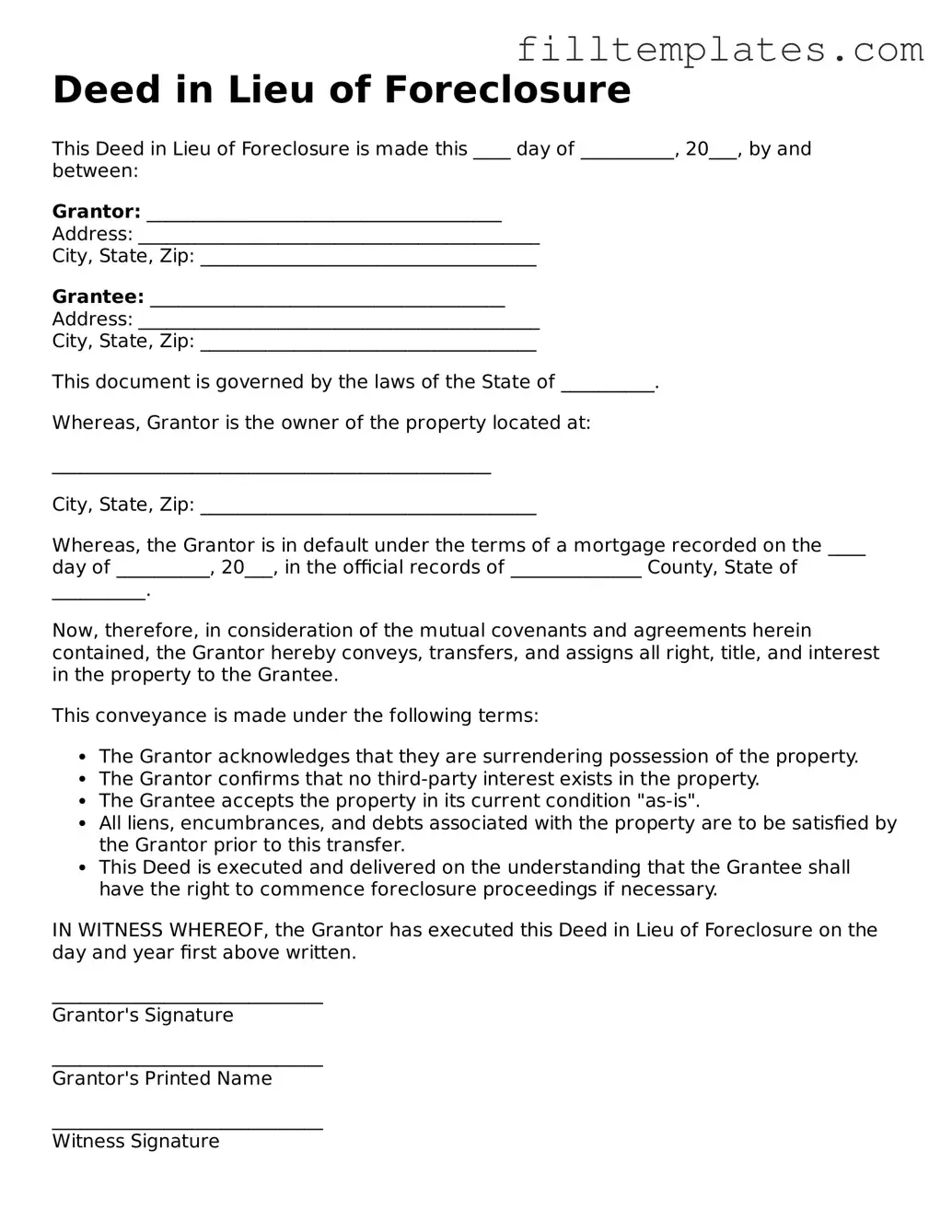Deed in Lieu of Foreclosure
This Deed in Lieu of Foreclosure is made this ____ day of __________, 20___, by and between:
Grantor: ______________________________________
Address: ___________________________________________
City, State, Zip: ____________________________________
Grantee: ______________________________________
Address: ___________________________________________
City, State, Zip: ____________________________________
This document is governed by the laws of the State of __________.
Whereas, Grantor is the owner of the property located at:
_______________________________________________
City, State, Zip: ____________________________________
Whereas, the Grantor is in default under the terms of a mortgage recorded on the ____ day of __________, 20___, in the official records of ______________ County, State of __________.
Now, therefore, in consideration of the mutual covenants and agreements herein contained, the Grantor hereby conveys, transfers, and assigns all right, title, and interest in the property to the Grantee.
This conveyance is made under the following terms:
- The Grantor acknowledges that they are surrendering possession of the property.
- The Grantor confirms that no third-party interest exists in the property.
- The Grantee accepts the property in its current condition "as-is".
- All liens, encumbrances, and debts associated with the property are to be satisfied by the Grantor prior to this transfer.
- This Deed is executed and delivered on the understanding that the Grantee shall have the right to commence foreclosure proceedings if necessary.
IN WITNESS WHEREOF, the Grantor has executed this Deed in Lieu of Foreclosure on the day and year first above written.
_____________________________
Grantor's Signature
_____________________________
Grantor's Printed Name
_____________________________
Witness Signature
_____________________________
Witness Printed Name
_____________________________
Notary Public (if required)
